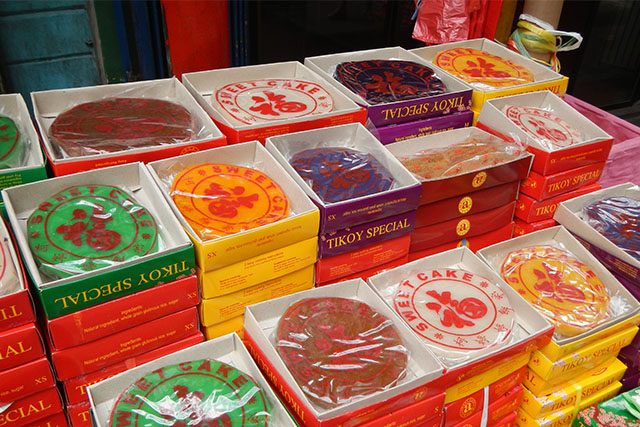As the Chinese New Year looms, Filipinos can’t help but talk about the ultimate food staple associated with the occasion which is in the form of a sweet glutinous rice cake.
“Tikoy,” or “nian gao” in Mandarin, is once again a topic in online conversations with the upcoming Lunar New Year or Spring Festival on February 12, Friday.
The traditional Chinese new year cake is known for its sticky consistency that “symbolizes a healthy bond within the family and other relationships,” according to a magazine.
For others, it also means that “luck will stick to you all year,” Tatler Philippines said.
“Tikoy” initially made its way to the Filipino cuisine when Chinese traders started exchanging goods with the locals before the Spaniards came to colonize the country.
It was then incorporated into the kitchens of Filipinos as a must-have delicacy whenever the occasion rolls around.
RELATED: How the humble Chinese pastry ‘tikoy’ become a Filipino favorite
The glutinous rice cake is usually cooked as a buttered “tikoy” wherein its strips are dipped in a beaten egg mixture and then fried in butter and oil.
It can also be coated in lumpia wrappers and then deep fried to a crispy texture.
Others steam the “tikoy” with grated coconut and dip it in ground peanut.
Eng Bee Tin, Sweet Taste Tikoy, the Salazar Bakery and Lung Hin Restaurant are some of the establishments that sell the best of the beloved delicacy, according to Chinoy TV, a Philippine-based television program that features the Chinese heritage.
Some Filipinos reminisced their love for “tikoy” in anticipation of the lunar new year.
“Oo nga pala, Chinese New Year na naman. Marami na namang iba’t-ibang klaseng luto ng tikoy sa bahay,” a Twitter user said.
“Ganitong season nakaka-miss face to face na klase lalo na ‘pag malapit na ang Chinese New Year. Tikoy na sandamakmak. ‘Yung tipong nakapagbigay ka na sa kamag-anak at kapitbahay. May original style na pagluluto ng tikoy, may palitaw, may turon pa para ‘di umay,” another Filipino shared.
Another Twitter user took a picture of “tikoys” that are “usually” given by their boss before the occasion.
Our boss usually gave us tikoy before chinese new year pic.twitter.com/BPYK2zuDok
— 크리스틴 (@CONCHEchristine) February 8, 2021
A Facebook user also shared fried strips of their “tikoy” and said that it was cooked since Chinese New Year is just around the corner.
“Dahil malapit na Chinese New Year, TIKOY (kayo) diyan,” she wrote on February 6.
Chinese New Year is the first day of a new year on the Chinese calendar.
It is celebrated during the second new moon after the winter solstice, which usually falls between January 21 and February 20 on the Gregorian calendar.










